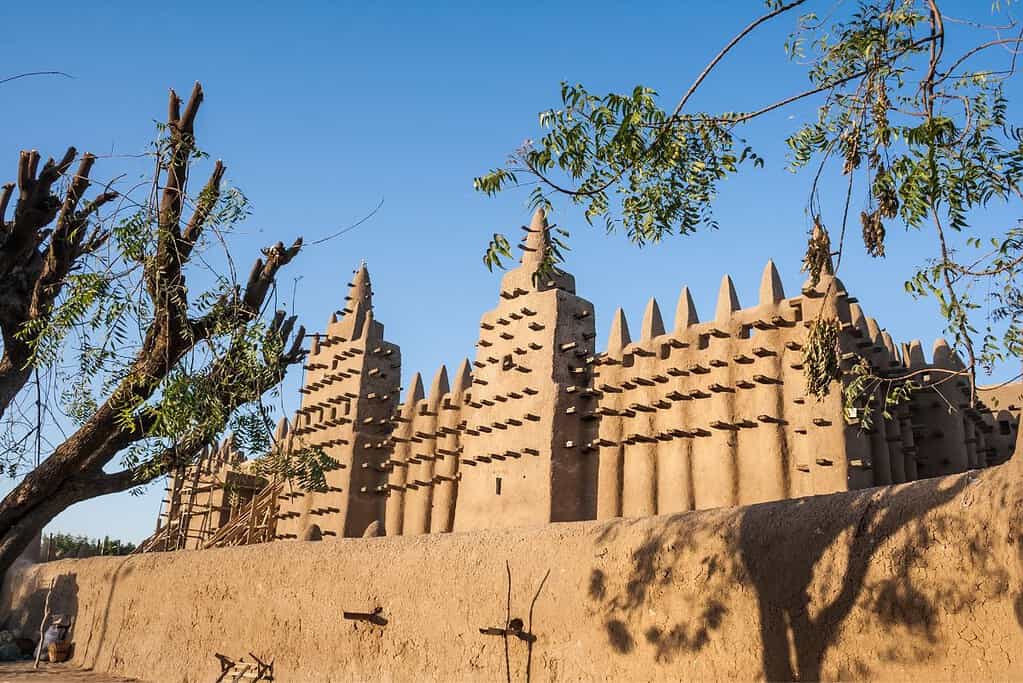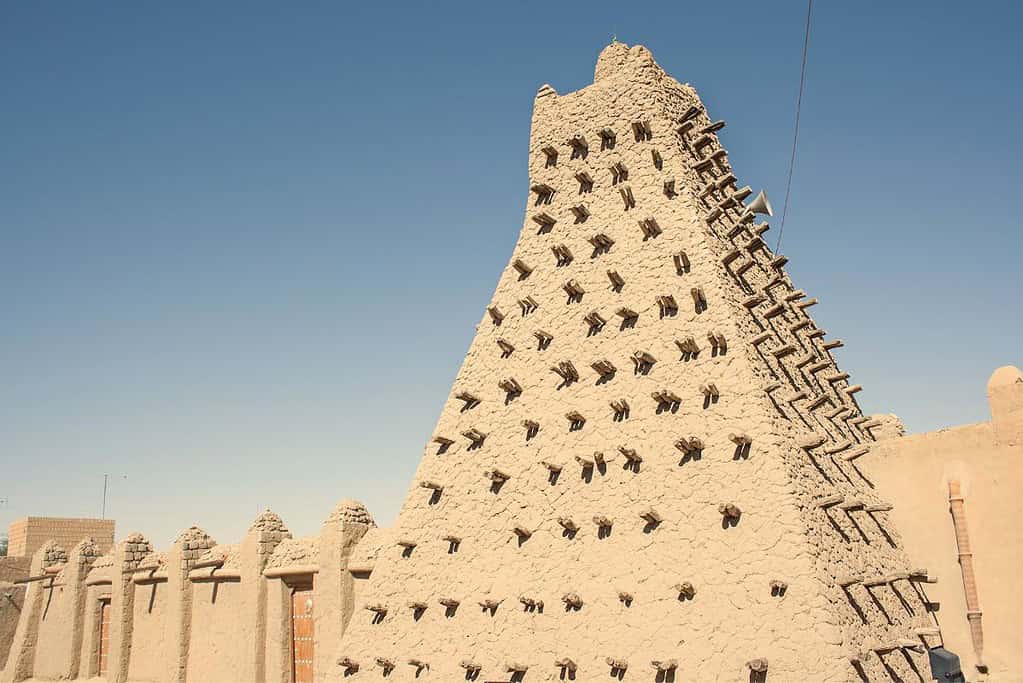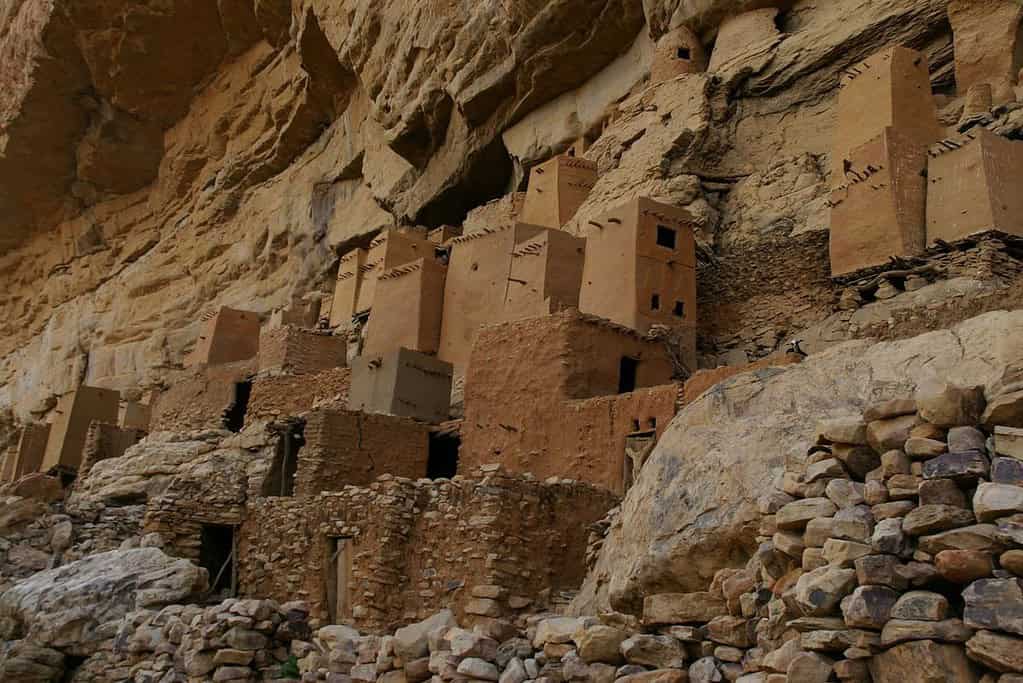Table of Contents
The UNESCO Sites in Mali have resulted from the recognition of 4 cultural and natural landmarks as UNESCO World Heritage Sites in Mali and 15 locations on the Mali UNESCO tentative list. These touristic sites in Mali are acknowledged for their unique and valuable cultural, natural, artistic, and historic significance, and are preserved for future generations to enjoy.
In addition to these 4 sites in the Mali UNESCO list, there are many other places to travel to Mali that are being considered for UNESCO recognition. These sites, listed on the tentative list, showcase the rich cultural heritage of the country and are waiting for approval to join the prestigious and famous World Heritage Sites list.
To help visitors discover these remarkable Mali tourist attractions, we have put together an interactive map of the UNESCO sites in Mali.
Mali UNESCO Map
Click markers to show information and photo.
World Heritage Sites in Mali
UNESCO World Heritage Sites in Mali
There are 4 UNESCO World Heritage Sites in Mali. All of these three sites are listed under the Cultural category.
- Old Towns of Djenné
- Timbuktu
- Tomb of Askia
- Cliff of Bandiagara (Land of the Dogons)
UNESCO World Heritage Sites in Mali are protected locations for their cultural and natural importance.
Old Towns of Djenné

The Old Towns of Djenné are UNESCO World Heritage Sites in Mali, West Africa. These historic towns, known as Djenné-Jeno and Djenné, are renowned for their impressive adobe architecture and traditional mud-brick structures. The Old Towns of Djenné are home to the Great Mosque, an architectural masterpiece and one of the most iconic landmarks in Africa. The towns have a rich cultural heritage and are an important center for Islamic learning and trade. With their unique architectural style and cultural significance, the Old Towns of Djenné offer a captivating glimpse into the region’s history and traditions.
Timbuktu

Timbuktu, located in Mali, is a renowned UNESCO World Heritage Site. It holds great historical and cultural significance as a center of Islamic learning and trade in West Africa. Timbuktu was a hub of intellectual and commercial activities during the medieval period, playing a crucial role in the trans-Saharan trade route. The city boasts impressive architectural marvels such as the famous Djinguereber Mosque, the Sankore Mosque, and the Sidi Yahya Mosque, which exhibit exquisite mudbrick craftsmanship. The ancient manuscripts preserved in Timbuktu’s libraries provide valuable insights into African history, science, and literature. Timbuktu’s inclusion on the UNESCO list recognizes its vital role in Africa’s intellectual and cultural heritage.
Tomb of Askia
The Tomb of Askia is a UNESCO World Heritage Site in Gao, Mali. It is an architectural masterpiece that serves as the final resting place of Askia Muhammad I, one of the most prominent rulers of the Songhai Empire. The tomb is a striking example of Sudano-Sahelian architecture, characterized by its towering pyramidal structure and intricately decorated facades. The site holds great cultural and historical significance, reflecting the Songhai Empire’s wealth, power, and religious beliefs during the 15th century. The Tomb of Askia stands as a testament to the rich heritage of Mali and attracts visitors from around the world to marvel at its grandeur and historical importance.
Cliff of Bandiagara (Land of the Dogons)

The Cliff of Bandiagara, also known as the Land of the Dogons, is a UNESCO World Heritage Site in Mali. This magnificent natural wonder consists of a massive sandstone cliff stretching approximately 150 kilometers, creating a dramatic and breathtaking landscape. The Dogon people, known for their rich cultural traditions and unique architectural heritage, have inhabited this region for centuries. The cliff is adorned with numerous ancient villages, each showcasing intricate mud-brick houses and granaries, reflecting the remarkable architectural skills of the Dogon people. The site also preserves the Dogon’s spiritual practices, including their fascinating mythology and rituals, making it a visually stunning site and an important cultural treasure.
Mali UNESCO tentative list
- La Boucle du Baoulé
- Es-Souk
- La Cité Historique de Hamdallahi
- Le Fort de Médine
- La grande mosquée de vendredi de Niono
- La Mosquée de Komoguel
- Le Tata de Sikasso
- La Réserve de biodiversité du Parc du Bafing Makana
- Le Réservoir naturel du Lac Magui
- La Réserve de la Biodiversité des éléphants du Gourma
- Le Bassin du fleuve Niger (du seuil de Markala au lac Débo)
- Cathédrale de Bamako
- L’Eglise de Mandiakuy
- Sites historiques et paysages culturels du Manden
- Site de la Mosquée de Kankou Moussa à Gao
Tours in Mali
Our choices of tours in Mali are divided into thematic features such as Timbuktu, Djenné, and Dogon Country Experience.
